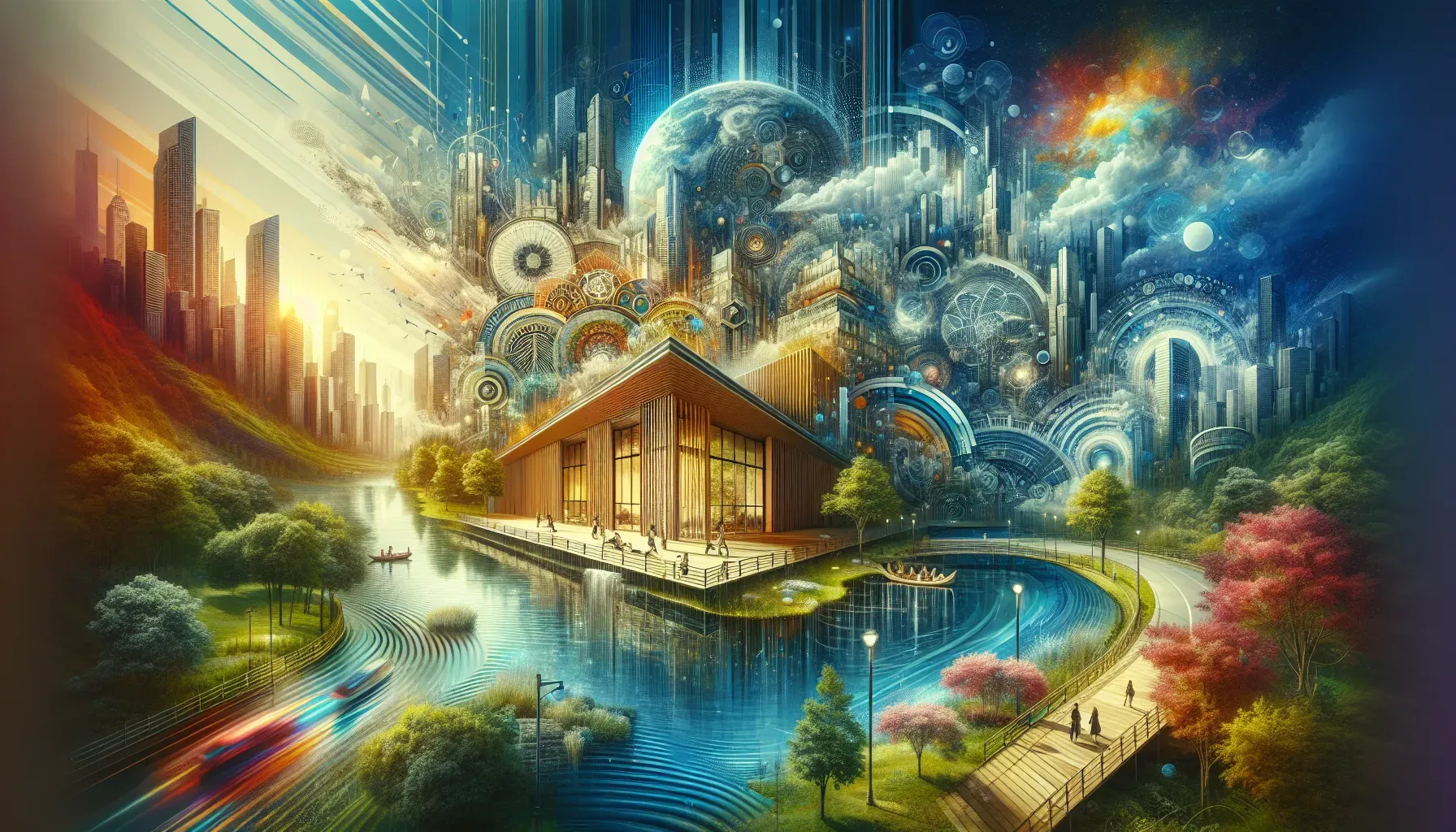Healing Spaces Redefined: From Nature’s Lap to Urban Wellness Sanctuaries

In the fast-paced modern world, the concept of healing spaces has evolved significantly. From historical perspectives on nature as the original healer to the rise of urban wellness sanctuaries, the dynamics of healing environments have undergone a profound transformation. Let's delve into the intricate tapestry of healing spaces, exploring the fusion of architectural alchemy, biophilic design, urban retreats, virtual vistas, and community engagement in fostering holistic well-being.
The Evolution of Healing Spaces in Modern Society
Throughout history, civilizations have revered nature for its intrinsic healing properties. The ancient Greeks practiced "Thalassotherapy," harnessing the healing powers of seawater to promote physical and mental wellness. Similarly, traditional Chinese medicine emphasized the restorative influence of natural elements, attributing therapeutic significance to landscapes, plants, and water bodies.
Historical Perspectives: Nature as the Original Healer
It's essential to recognize the profound impact of nature on well-being. By integrating this historical perspective into contemporary wellness ideologies, it seeks to create an immersive healing experience that resonates with its audience.
Ancient civilizations demonstrated a remarkable understanding of architectural design's influence on well-being. The Egyptians constructed healing temples dedicated to Imhotep, the god of medicine and healing. These sacred spaces incorporated intricate architectural elements, such as colonnaded halls and serene courtyards, to evoke tranquility and facilitate spiritual rejuvenation.
Architectural Alchemy: Healing Spaces in Ancient Civilizations
Similarly, in ancient India, the principles of Vastu Shastra guided the construction of living spaces in harmony with natural forces. This holistic approach aimed to optimize health and vitality by aligning architectural design with cosmic energies.
By embracing the wisdom of architectural alchemy from ancient civilizations, Peppino's Health Haven endeavors to infuse its wellness spaces with a harmonious blend of design elements that promote healing and serenity.
The emergence of biophilic design represents a paradigm shift in modern healthcare architecture. By seamlessly integrating natural elements such as greenery, sunlight, and water features into built environments, biophilic design fosters a deep connection with nature, thereby enhancing psychological well-being and physiological health.
As we recognize the transformative potential of biophilic design in redefining wellness spaces. By infusing its healthcare environments with verdant landscapes, soothing water features, and ample natural light, it aims to create rejuvenating sanctuaries that nurture both body and soul.
Biophilic Design: Integrating Nature into Healthcare Environments
As urbanization accelerates globally, the demand for urban wellness sanctuaries has surged. These oases of tranquility within bustling metropolises offer respite from the frenetic pace of city life. From rooftop gardens and meditation pods to immersive sensory experiences, urban retreats are redefining the concept of wellness within urban landscapes.
As we embrace the ethos of urban wellness sanctuaries by curating spaces that provide solace amid the urban hustle. By integrating innovative wellness concepts into city-centric environments, it aims to cater to the holistic well-being needs of urban dwellers.
The Rise of Urban Retreats: Wellness Sanctuaries in Cities
In an era marked by digital immersion, virtual vistas and digital gardens have emerged as novel conduits for extending healing spaces beyond physical boundaries. Immersive virtual environments enriched with natural landscapes and ambient sounds evoke a sense of calm and rejuvenation, offering therapeutic experiences accessible from anywhere.
As we recognize the potential of virtual vistas in augmenting its healing offerings. By leveraging technology to create immersive digital gardens and virtual wellness retreats, it endeavors to transcend spatial limitations and extend its healing embrace to a global audience.
Virtual Vistas: Expanding Healing Spaces Digitally
Community colleges serve as catalysts for fostering mental and emotional well-being through social engagement. By nurturing a sense of belonging and camaraderie, these educational institutions create supportive communities that promote holistic wellness. From mindfulness workshops to communal gardening projects, community colleges offer diverse avenues for nurturing mental resilience and emotional equilibrium.
Acknowledging the pivotal role of community engagement in promoting holistic wellness. By collaborating with community colleges and advocating for initiatives that prioritize mental health support and social cohesion, it endeavors to foster a culture of well-being that extends beyond its physical spaces.
In conclusion, the evolution of healing spaces from reverence for nature's therapeutic essence to the integration of biophilic design in modern healthcare architecture embodies a profound commitment to holistic well-being. Peppino's Health Haven stands at the forefront of this transformative journey, redefining healing spaces with an unwavering dedication to nurturing harmony between individuals and their environments.
Frequently Asked Questions
Architectural alchemy refers to the ancient understanding of how architectural design influences well-being. Civilizations like the Egyptians and Indians created sacred spaces that incorporated elements promoting tranquility and spiritual rejuvenation. These designs aimed to harmonize living environments with natural forces, optimizing health and vitality through thoughtful architectural choices.
Urban retreats serve as tranquil oases within bustling metropolises, providing city dwellers with a respite from daily stress. These sanctuaries often feature rooftop gardens, meditation pods, and sensory experiences that promote relaxation and mindfulness. By integrating wellness concepts into urban landscapes, they cater to the holistic well-being needs of individuals living in fast-paced environments.
Community colleges act as vital support systems for mental and emotional well-being by creating a sense of belonging among students. Through initiatives like mindfulness workshops and communal gardening projects, they encourage social engagement and resilience. This collaborative environment promotes holistic wellness, helping individuals develop emotional equilibrium and mental strength.
Biophilic design is an architectural approach that integrates natural elements into built environments, enhancing psychological and physiological health. By incorporating greenery, sunlight, and water features, healthcare facilities can create rejuvenating spaces that foster a deep connection with nature. This design philosophy aims to improve patient outcomes and overall well-being in modern healthcare settings.
The evolution of healing spaces reflects a growing understanding of the importance of nature in promoting well-being. Historically revered for its therapeutic properties, nature's influence has been integrated into modern wellness ideologies through biophilic design and urban retreats. This transformation emphasizes creating immersive environments that nurture both body and soul in contemporary society.
